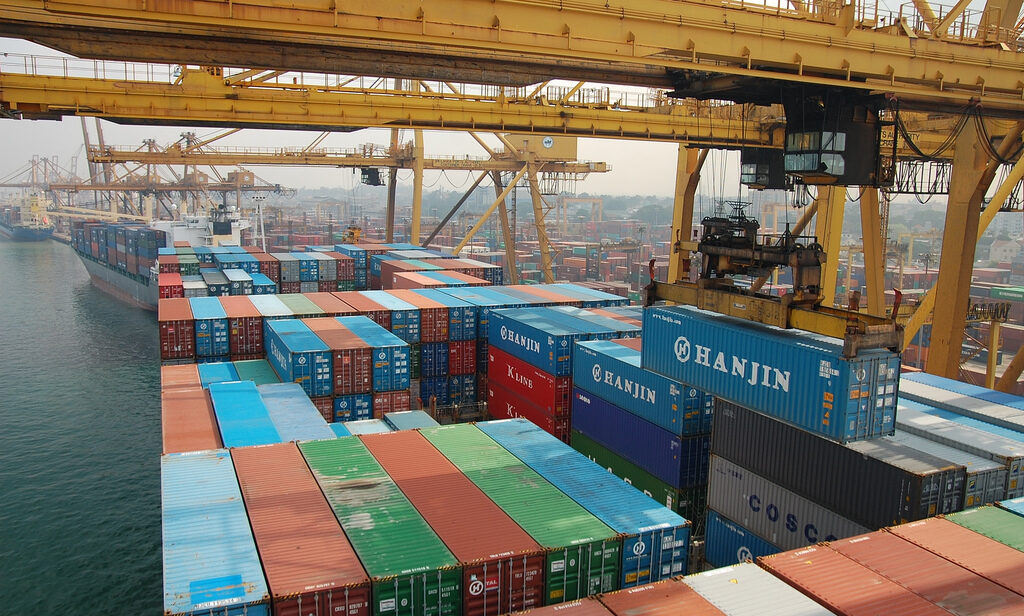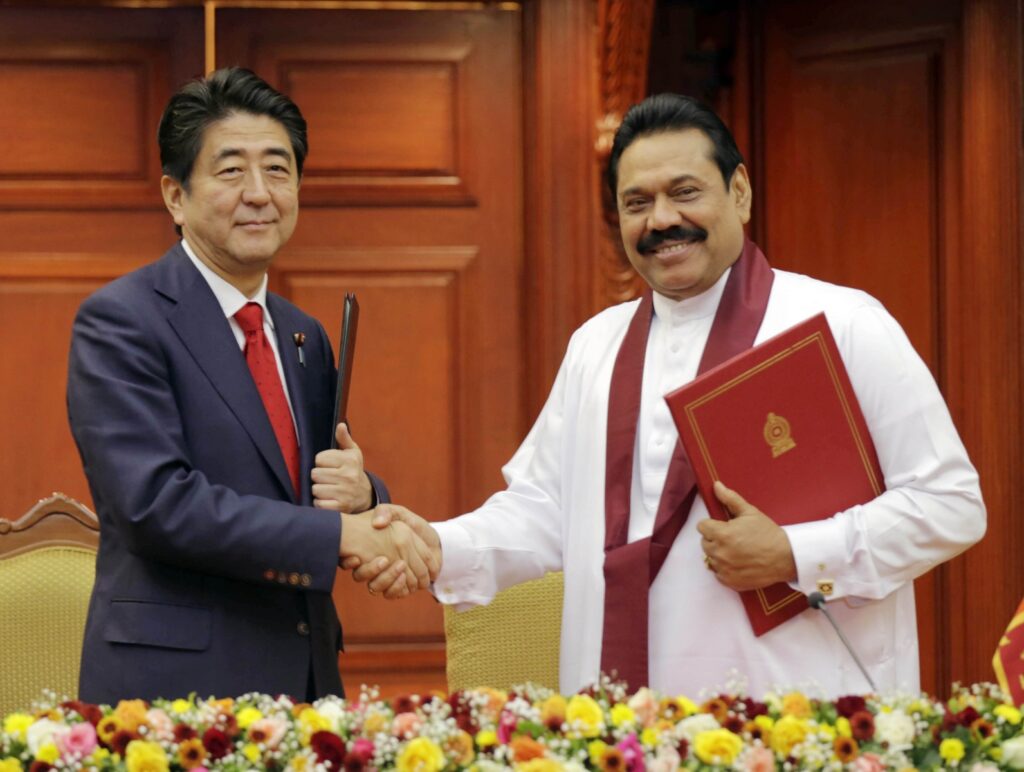
Since 2023, Japan has extended its investment in South Asian infrastructure and connectivity projects to strengthen its soft power diplomacy in the region. As part of this extension, Sri Lanka hosted the Japanese Foreign Minister in July 2023 and invited Tokyo to resume its investment in Sri Lanka’s infrastructure projects and its green and digital economies, after some of them were halted due to Chinese investments in similar projects. The meeting also had a specific focus on funding power projects, roads, and ports. This comes after the cancellation of the previous MOU on port development with Japanese assistance.
Sri Lanka has experienced its worst financial crisis in more than seven decades. The previous Gotabaya government’s dependence on Chinese financial assistance contributed to Sri Lanka’s default. However, Sri Lanka is now fostering alternative alliances with dependable Asian partners through smaller forums to counter Chinese dominance, and Japan is a major player in this strategy. While the relationship is based on cooperation as opposed to dependence, Japanese infrastructure funding is still a vital part of Sri Lanka’s strategy to restructure its debt repayment plan and unlock the USD $2.9 billion bailout from the International Monetary Fund. Therefore, a closer look at developments in the Sri Lanka-Japan relationship is essential to understanding future trajectories in the Sri Lankan economic crisis.
Failed Financial Investments
Sri Lanka’s post-pandemic economic freefall resulted in a political and humanitarian crisis largely attributable to mismanagement by successive Sri Lankan governments. For years the country has been plagued by the “twin deficit,” or deficits in both state fiscal and current accounts. This twin deficit is accompanied by high inflation, high levels of foreign debt, endemic corruption, and COVID-19 stagnation, which also ravaged the island’s vital tourism industry. The geopolitical fall-out of the Russia-Ukraine war has exacerbated the food and energy crises. The previous Gotabaya administration’s economic plans, such as banning chemical fertilizers, also devastated the tea industry, adding to the economic pains.
With the change of government, the Japan-Sri Lanka relationship has been improving as Sri Lanka announced the co-development of the West Container Terminal with Japan and India.
Among the projects that the Sri Lankan government has mismanaged over the years is the Jaya Container Terminal project. The container terminal in Colombo is a wholly owned subsidiary of Sri Lanka Ports Authority, and was initially funded by Japan in the 1980s. On May 28, 2019, India and Japan agreed to invest between USD $500-700 million to jointly develop the East Container Terminal. However, Sri Lanka halted this agreement to develop and operate the crucial terminal, stating that the terminal would be wholly owned and developed by the state-run Ports Authority.
Furthermore, the government explained it had offered foreign participation in the West terminal primarily because it required a large investment. The East terminal, on the other hand, was constructed and required little additional financing. After the USD $500 million Memorandum of Understanding (MoU) was cancelled and the Japanese-funded light rail transit (LRT) project was suspended, there was a freeze in ties between Tokyo and Colombo. While a key reason was Tamil mistreatment by the Rajapaksa government and port workers protesting Indian control over port operations, Japan was caught in the crossfire of domestic politics and the India-Sri Lanka bilateral relationship.
Recently, with the change of government, the Japan-Sri Lanka relationship has been improving as Sri Lanka announced the co-development of the West Container Terminal with Japan and India. Unlike previous projects, this one will be operated as a public-private company. The Ports Authority and companies selected by the Japanese and Indian governments will be the major players.

Current Japanese Investment in Sri Lanka
China, as of June 2022, held 52 percent of Sri Lanka’s bilateral debt. Japan was the second largest creditor, at 20 percent, followed by India at 12 percent and France at three percent. Japan had offered to take the lead in establishing a meeting of creditor nations to promote the restructuring of Sri Lanka’s debt, with India and France launching a common platform to aid Japan in this endeavour. The high-level meeting took place on the sidelines of the annual spring meetings of the World Bank and the IMF in Washington on April 13, 2023. Other international organizations, along with the private sector, also participated.
Japan’s Ambassador to India, Hiroshi Suzuki, said that Japan was keen to work with India on projects in South Asia, and sees both India and Sri Lanka “as indispensable partners” to realize Prime Minister Fumio Kishida’s vision of a “Free and Open Indo Pacific,” which he unveiled in a speech in Delhi in 2023. Japan and India have also taken the lead in setting up humanitarian and rebuilding efforts in Sri Lanka. India has been a primary source of assistance, providing about USD $4 billion in currency swaps, loans, and humanitarian assistance. However, Japan has also provided Sri Lanka with emergency grant aid worth USD $3 billion.
As per official data, about 60 enterprises with USD $350 million in Japanese investments are operating in Sri Lanka. However, due to the current political instability and economic crisis, several projects have been halted including suspension of loans by the Japan International Cooperation Agency (JICA), putting on hold USD $464 million for the construction of a new multilevel terminal and viaduct at Bandaranaike International Airport which was to be completed by 2023.
The rise in mini-lateralism offers an opportunity for Colombo to gather Asian donors and investors to facilitate better consensus building and effective decision making.
Apart from Japanese investments, Tokyo has become an important partner in the maritime security of the Indian Ocean Region. Between 2011 and 2015, vessels of the Japanese Maritime Self Defence Force visited Sri Lankan ports on 22 occasions. Sri Lanka is supported under three priority areas of promoting quality growth, development cooperation for inclusive growth, and mitigating vulnerability, amounting to approximately USD 97 billion (March 31, 2020). Japan has also provided a total of approximately USD $36.5 million for major grant assistance in 2022. In May of the same year, the Government of Japan announced a USD $1.5 million (LKR 600 million) funding to help the Government of Sri Lanka respond to the ongoing economic crisis, indicating increased funding from Japan both as grants and investments.
Challenges and Further Opportunities
Developing connectivity infrastructure in Sri Lanka requires large investments, which necessitates foreign participation. A credible structural reform program, along with necessary macroeconomic adjustments, is critical to correct overall fiscal imbalances. In these economic conditions, the financial performance of Japanese and Indian businesses that have direct operations in Sri Lanka will be impacted amid a huge devaluation of the local currency. Since international investments in Sri Lanka are limited at the moment, the performance of these companies will be used as an indicator of investment potential by other investors and bleak conditions could diminish confidence in the Sri Lankan economy. Furthermore, the rise in mini-lateralism offers an opportunity for Colombo to gather Asian donors and investors to facilitate better consensus building and effective decision making.
The revival of projects between Japan and Sri Lanka during the current Wickremesinghe government marks an improvement in bilateral relations. The government’s near bankruptcy coupled with the worst economic crisis in the post-independent era challenged Sri Lanka’s bilateral relations with old partners like Japan. Although Japan has long been considered a key Sri Lankan partner, the aid from Tokyo has remained in the low millions, which is not enough to counter Chinese presence in the island nation. Japan could increase its investment in Sri Lanka through projects such as critical infrastructure, power projects, port and road development, dedicated investment zones and green and digital technologies. Japan provides the opportunity for Sri Lanka to reduce its dependence on China for economic reform, while Sri Lanka provides Japan an opening to penetrate deeper into the South Asian market.
Also Read: Sri Lanka in 2023: Short-Term Solutions to Long-term Problems
***
Image 1: Colombo Harbour via Wikimedia Commons.
Image 2: Japan and Sri Lanka signing a deal under the Rajapaksa government via Flickr.


